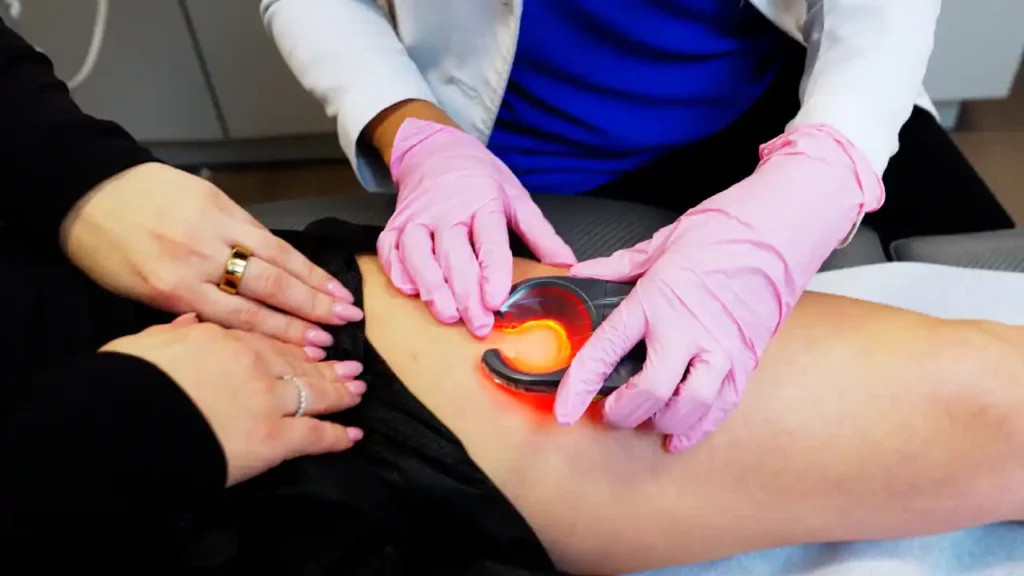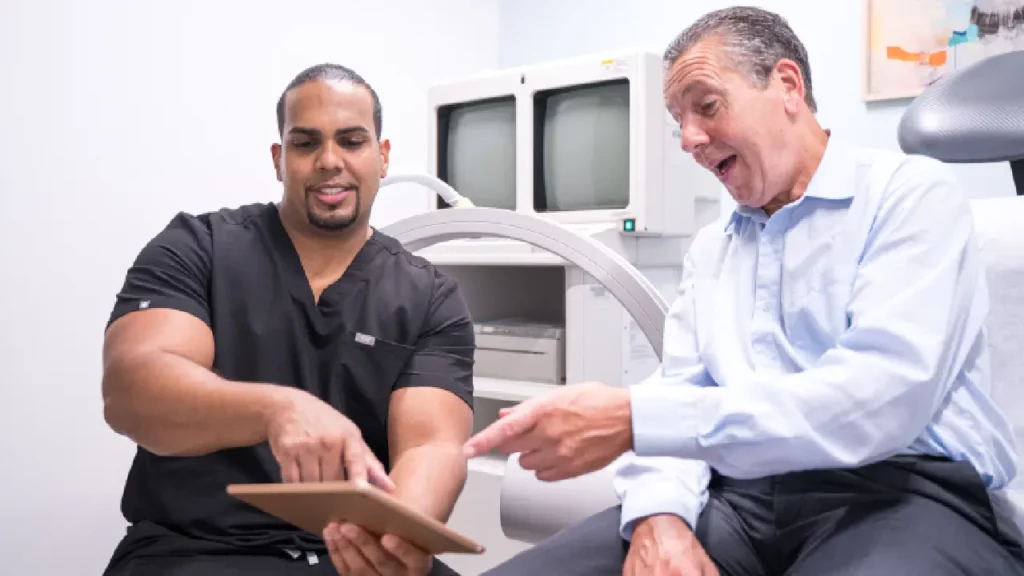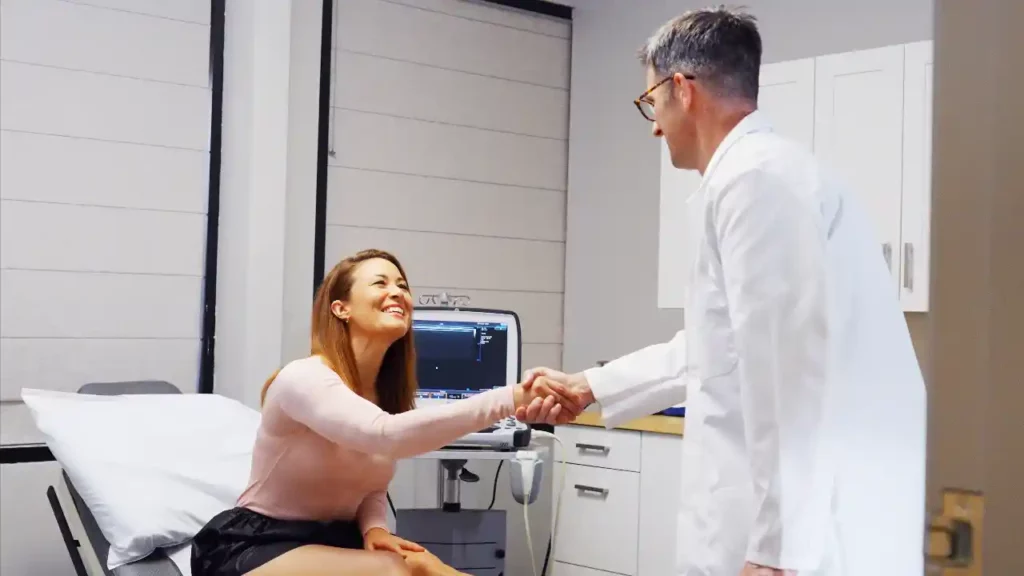How Do You Get Rid of Spider Veins Without Pain?
You notice small, red or purple veins on your legs. They resemble spider webs, and no matter what you do, they seem to be getting more noticeable each day. You may have tried covering them with makeup or even wearing longer pants or tights, but deep down, you feel frustrated by their persistent appearance. You may also feel some discomfort, such as aching or swelling in your legs, especially after long hours of standing or sitting.
Spider veins are often harmless but can be unsightly and sometimes painful. In some cases, spider veins can also be caused by chronic venous insufficiency, a medical condition wherein blood accumulates in the leg veins instead of flowing freely to the heart. Fortunately, there are effective treatments that can help you eliminate spider veins without causing discomfort.
At Vein Treatment, we offer minimally invasive spider veins treatments and vein treatments for underlying venous insufficiency. Whether you’re experiencing the early stages of spider veins or more advanced vein disease, we offer personalized solutions that can help restore the smooth, healthy appearance of your skin and relieve the discomfort caused by these veins.
What is the Best Spider Veins Treatment?
Sclerotherapy is one of the best spider vein treatments available. It works by injecting a special solution into the affected veins. This solution irritates the vein’s lining, causing it to collapse and stick together. Over time, the vein turns into scar tissue and is absorbed by the body, effectively making it disappear. Sclerotherapy is highly effective for treating spider veins and small varicose veins, offering a simple solution for improving the appearance of your skin.
Sclerotherapy is relatively quick and involves very little discomfort. Most patients report only a mild stinging or slight burning sensation during the injection, and any discomfort subsides within a few minutes. Sclerotherapy is widely regarded as the gold standard for treating spider veins because it provides long-lasting results with minimal downtime. It is effective in treating both small and large spider veins, and it can be performed with no need for anesthesia.
Does Sclerotherapy Cause Pain?
Sclerotherapy generally causes minimal discomfort. During the injection, most patients experience a brief stinging or mild burning sensation at the site. This sensation typically lasts for only a few seconds. After the procedure, you may feel mild soreness or a feeling of fullness in the treated area, but this usually subsides within a few hours. Overall, sclerotherapy is well-tolerated, with very little pain involved, making it a popular choice for vein treatment.
What is the Best Treatment for Venous Insufficiency?
What is the best treatment for venous insufficiency, the root cause of spider veins? Spider veins are often symptomatic of venous insufficiency, a condition in which the veins are unable to efficiently return blood to the heart. This leads to pooling blood, increased pressure in the veins, and the eventual development of spider veins. In cases where spider veins are caused by venous insufficiency, it is crucial to treat the underlying condition first.
This means that while sclerotherapy can be used to treat visible spider veins, the underlying venous insufficiency should be addressed first to prevent the recurrence of spider veins and further complications. Several vein treatments are available to manage venous insufficiency, and these can be tailored to your specific needs based on the severity of the condition.
Endovenous Laser Ablation (EVLA)
One of the most popular treatments for venous insufficiency is Endovenous Laser Ablation (EVLA). During this procedure, a laser is used to heat and seal off damaged veins. The heat causes the vein to collapse, redirecting blood flow to healthier veins. EVLA is minimally invasive and offers a quick recovery time with minimal discomfort. It’s highly effective for treating larger varicose veins, which are often associated with venous insufficiency.
Radiofrequency Ablation (RFA)
Another option for treating venous insufficiency is Radiofrequency Ablation (RFA). This procedure uses radiofrequency energy to heat and close off problematic veins. Similar to EVLA, RFA is a minimally invasive treatment that targets the root cause of venous insufficiency by shutting down damaged veins and rerouting blood flow. Patients typically experience less discomfort and a quicker recovery time than traditional vein stripping procedures.
VenaSeal
VenaSeal is a newer, innovative treatment that uses a medical adhesive to close off damaged veins. It is particularly beneficial for patients who prefer a less invasive option with little to no discomfort. VenaSeal is ideal for those with more advanced cases of venous insufficiency, as it effectively addresses larger veins. The procedure requires no incisions or anesthesia, making it an excellent choice for those who want a quick, virtually painless solution.
Best Tips to Manage Spider Veins and Vein Disease
While there is no surefire way to completely prevent spider veins, lifestyle changes can help reduce your risk of developing them and manage existing vein disease. By improving circulation and taking proactive steps to care for your veins, you can minimize the impact of spider veins and varicose veins. Here are some helpful tips for managing vein health:
- Exercise Regularly: Physical activity, especially walking, cycling, and swimming, can help improve circulation in your legs and reduce the risk of vein problems. Exercise encourages blood flow, preventing blood from pooling in the veins and minimizing vein disease.
- Elevate Your Legs: If you spend long periods sitting or standing, it’s important to elevate your legs whenever possible. Elevating your legs above your heart helps reduce pressure on your veins and promotes better circulation, reducing the likelihood of spider veins forming.
- Wear Compression Stockings: Compression stockings provide gentle pressure to the legs, improving blood flow and reducing swelling. They are especially helpful for people who stand for long periods or have a history of vein disease.
- Maintain a Healthy Weight: Excess weight puts added pressure on your veins, which can lead to poor circulation and the development of spider veins. Maintaining a healthy weight can help prevent further strain on your veins and improve overall circulation.
- Avoid Long Periods of Standing or Sitting: If you have a job or lifestyle that requires long hours of sitting or standing, take regular breaks to move around. This helps promote healthy circulation and reduces the strain on your veins.
FAQs
How do you get rid of spider veins?
How to get rid of spider veins? Sclerotherapy is the best way to get rid of spider veins. This treatment involves injecting a solution into the veins, which causes them to collapse and fade. It’s minimally invasive and highly effective for reducing the appearance of spider veins.
What is the best spider veins treatment?
What is the best spider veins treatment? Sclerotherapy is widely regarded as the best spider veins treatment because it is quick, effective, and minimally painful. The procedure involves injecting a solution directly into the veins, causing them to shrink and disappear. Sclerotherapy can treat both small and large spider veins, providing long-lasting results.
How to get rid of spider veins without pain?
How to get rid of spider veins without pain? Sclerotherapy is a top choice for getting rid of spider veins without pain. This treatment involves injecting a solution into the affected veins, causing them to fade away. Most patients report minimal discomfort during the procedure, making it a popular and effective option for those looking for a noninvasive solution.
Learn about our vein clinics to find out how we can help you treat spider veins and underlying vein disease with the latest, minimally invasive vein treatments. Please schedule a consultation to request insurance verification and learn about your vein treatment options.









